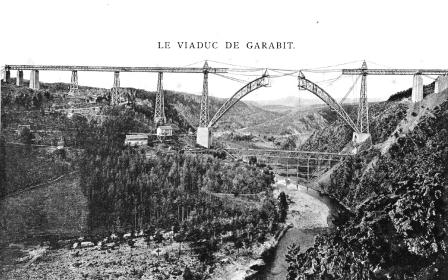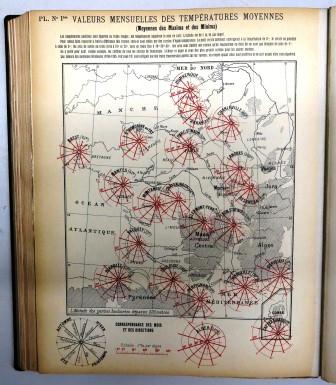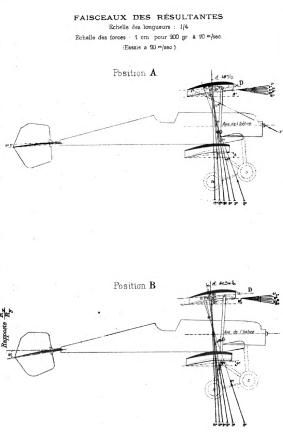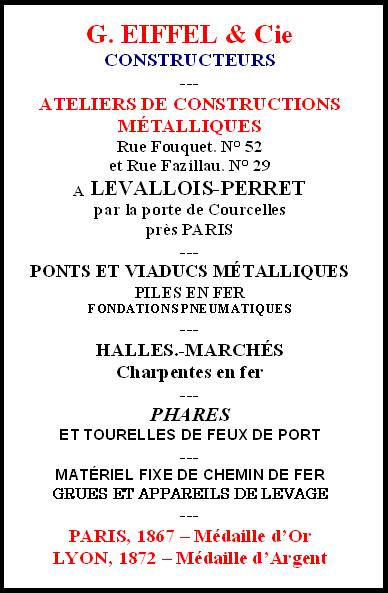Gustave Eiffel Beyond the "Useless and Monstrous" Tower
The Eiffel Tower? You probably know everything about it, don’t you? Including such fine details that 18,038 different parts were needed to build it and that each of the four legs is at an angle of 54° to the ground. Well, perhaps these details are not as fascinating as the fact that once finished in 1889 the tower surpassed the Washington Monument to assume the title of the tallest man-made structure in the world (984 feet). It had to yield this title in 1930 to a building in New York City. No, it was not the Empire State Building which was finished in 1931. It was the Chrysler Building (1,046 feet) that surpassed the Eiffel Tower as the tallest man-made structure.
Gustave Eiffel who was born 15 December 1832 in Dijon, Côte-d'Or, France was much more than “just” the creator of the Eiffel Tower. A man of many passions and accomplishments, Eiffel attended high school at Lycee Royal where he studied engineering, history and literature. He graduated with a degree in both science and humanities. He first studied at the École Polytechnique but later transferred to the École Centrale des Arts et Manufactures in Paris, graduating in 1855 with a diploma in …chemistry. He was interested in construction from an early age and a couple of years after graduation became an engineer for the Compagnie des chemins de fer de l'Ouest. He later became chief of the construction office at Pauvels & Cie.
In 1866 Eiffel set up his own workshop using borrowed money, at 48 Rue Fouquet in Levallois-Perret. He subsequently formed a partnership with a wealthy engineer Théophile Seyrig (1843-1923), resulting in the firm Eiffel & Cie.
They specialized in metal construction, most notably bridges, letting mathematics find ways to build lighter, stronger structures. In 1876 they designed the 1,158-foot steel railroad Ponte Maria Pia (Maria Pia Bridge) over the Douro River in Oporto, Portugal. Suspended 200 feet above the river with the single-arch span of 520 feet, it was the largest bridge of this type in the world. Incidentally, its replacement was built only in 1991.
In 1879 the partnership with Seyrig ended and the company, which by that time had an established position among the leading French engineering companies, became Société des Établissements Eiffel. In 1880 Eiffel ventured into Eastern Europe where he built a bridge over the Tisza River near Szeged in present day Hungary. Earlier he had built a bridge and a hotel in Romania and employed little-known Romanian engineer Gheorghe Pănculescu (1844-1924), the inventor of an innovative system for joining the metal girders together in the pre-assembly phase, the technology that Eiffel later used during the construction of the tower. Perhaps it’s not a coincidence that among many replicas of the tower that exist around the world, one that is especially awesome is located in Slobozia, Romania.
When a need arose to build what later became known as Garabit viaduct in Truyère, France, Eiffel’s company was chosen without the usual process of competitive tendering. Eiffel used a very similar design to that of the Ponte Maria Pia and built a viaduct which is 1,854 feet in length and has a principal arch of 541 feet. At the time of its completion in 1884, and for years to come, it was the highest bridge in the world suspended 400 feet above the surface of the water. A few years later Eiffel published a brief Notice sur le Viaduc du Garabit (près Saint-Flour) ligne de Marvejols a Neussarg.

Eiffel also worked on the Statute of Liberty which was erected in 1886. Thanks to him climbing to the observation deck inside the statute’s head is possible today. He devised a new support system for Bartholdi’s sculpture, replacing originally proposed sand-field coffers with a ninety-two-foot-high pylon structure composed of four iron wear-bearing posts with a single forty-foot iron beam attached to support the raised arm and torch. This change allowed for the placement inside the statute of the double-spiral staircase.
In 1887, even before the tower was constructed, Eiffel agreed to build the locks of the Panama Canal. The project, however, was mismanaged by its principal builder the Compagnie du Canal de Panama led by Ferdinand De Lesseps (1805-1894) and his son Charles in what is often referred to as the biggest financial and political scandal of the century. When a year later the company went bankrupt Eiffel was among those indicted for fraud and eventually sentenced to two years in prison. He managed to clear his name but with his honor and dignity severely compromised, he retired not only from Société des Établissements Eiffel but also from business altogether. He closed this period of his life by publishing a brief personal account of the Panama Canal fiasco which appeared under the title Les transactions de m. G. Eiffel, avec la liquidation de Panama (1894).
Controversy was something that Eiffel had to deal with continually. Even his biggest achievement, the tower, drew criticism in a letter published in Le Temps:
"We, writers, painters, sculptors, architects and passionate devotees of the hitherto untouched beauty of Paris, protest with all our strength, with all our indignation in the name of slighted French taste, against the erection…of this useless and monstrous Eiffel Tower…To bring our arguments home, imagine for a moment a giddy, ridiculous tower dominating Paris like a gigantic black smokestack, crushing under its barbaric bulk Notre Dame, the Tour Saint-Jacques, the Louvre, the Dome of les Invalides, the Arc de Triomphe, all of our humiliated monuments will disappear in this ghastly dream. And for twenty years…we shall see stretching like a blot of ink the hateful shadow of the hateful column of bolted sheet metal."
Twenty years? The tower was to be dismantled in 1909 and it was built in a way that would allow such demolition to be done rather easily. The city of Paris did initially plan to do it but the tower proved valuable and it was allowed to remain. Over the years it played a role in many events, some of them somewhat strange. In 1925 it was twice “sold” for scrap metal by con artist Victor Lusting and in 1967 a secret agreement was allegedly negotiated for the tower to be dismantled and temporarily relocated to Montreal. The plan was supposedly vetoed by the company operating the tower out of fear that the French government would not allow it back.
The tower was also valuable to Eiffel in the way that it inspired and helped him to pursue other interests which were to occupy him for the rest of his life. Already in 1889 he had placed thermometers, barometers and anemometers on the tower. His La tour Eiffel en 1900 (1900-1902) in addition to discussing the tower also includes results of meteorological measurements done on the tower.
With time Eiffel built a weather station at his house in Sèvres and eventually expanded his record-taking to include measurements from many different locations across France. He first published results of his measurements from three places in Études pratiques de métérologie et observations comparées des Stations de Beaulieu, Sévres et Vacquey pour l'année 1903 (1904), and later produced an annual publication in which provided measurements from 22 locations over the span of seven years: Atlas météorologique 1906-1912 d'après vingtdeux stations françaises.




Eiffel also studied aerodynamics. His interest in this subject was a consequence of the problems he had encountered with the effects of wind forces on the structures he had built. His first experiments were conducted on the tower by dropping a measuring apparatus down a vertical cable stretched between the second level of the Eiffel Tower and the ground. He published the results of these experiments in Recherches expérimentales sur la résistance de l'air exécutées à la tour Eiffel (1907).
He later built an aerodynamic laboratory at the base of the tower with the first-ever wind tunnel. In this laboratory he studied air-resistance in connection with aviation. The results of these experiments were published in La résistance de l'air et l'aviation; expériences effectuées au Laboratoire du Champ-de-Mars (1910), and La résistance de l'air; examen des formules et des experiences (1910). The first of these books also appeared in a 2nd revised and enlarged English language translation by Jerome C. Hunsaker as The Resistance of the Air and Aviation Experiments Conducted at the Champ-de-Mars laboratory (1913). His tests were also used in the 2nd volume of a publication by Lucien Marchis: Cours d'aéronautique (1911).

In 1913 Eiffel received the Samuel P. Langley Medal for Aerodynamics awarded by the Smithsonian Institute. In his speech at the presentation of the medal Alexander Graham Bell stressed that Eiffel’s investigations “have given engineers the data for designing and constructing flying machines upon sound, scientific principles.”
In 1912, reacting to complaints about noise caused by his experiments, Eiffel built a new laboratory on the outskirts of Paris in Auteuil. He comprehensively documented the testing of scale model aeroplanes conducted in his new, bigger wind tunnel in his next book Nouvelles recherches sur la résistance de l'air et l'aviation faites au laboratoire d'Auteuil (1914).

During the last years of his life he summarized his experiments on aerial propellers in Études sur l'hélice aérienne faites au Laboratoire d'Auteuil (1920) and work that he did during World War I in Résumé des principaux travaux exécutés pendant la guerre au Laboratoire aérodynamique Eiffel, 1915-1918 (1921).
Eiffel died on 27 December 1923 allegedly while listening to Beethoven’s 5th symphony, but not to the monumental First movement: Allegro con brio, arguably one of the most famous in Western music – but to the lyrical Second movement: Andante con moto. What a gentle ending to the life of a giant. He was buried in the family tomb in Levallois-Perret Cemetery. The company created by him is today known under the name Eiffage Construction Métalliques and among other notable achievements, has credit for the construction of The Louvre Pyramid (1989), the one underneath which Mary Magdalene is allegedly buried, at least according to The Da Vinci Code. But that is a subject for another post.
Read E-Books with SimplyE
 With your library card, it's easier than ever to choose from more than 300,000 e-books on SimplyE, The New York Public Library's free e-reader app. Gain access to digital resources for all ages, including e-books, audiobooks, databases, and more.
With your library card, it's easier than ever to choose from more than 300,000 e-books on SimplyE, The New York Public Library's free e-reader app. Gain access to digital resources for all ages, including e-books, audiobooks, databases, and more.
If you don’t have an NYPL library card, New York State residents can apply for a digital card online or through SimplyE (available on the App Store or Google Play).
Need more help? Read our guide to using SimplyE.



